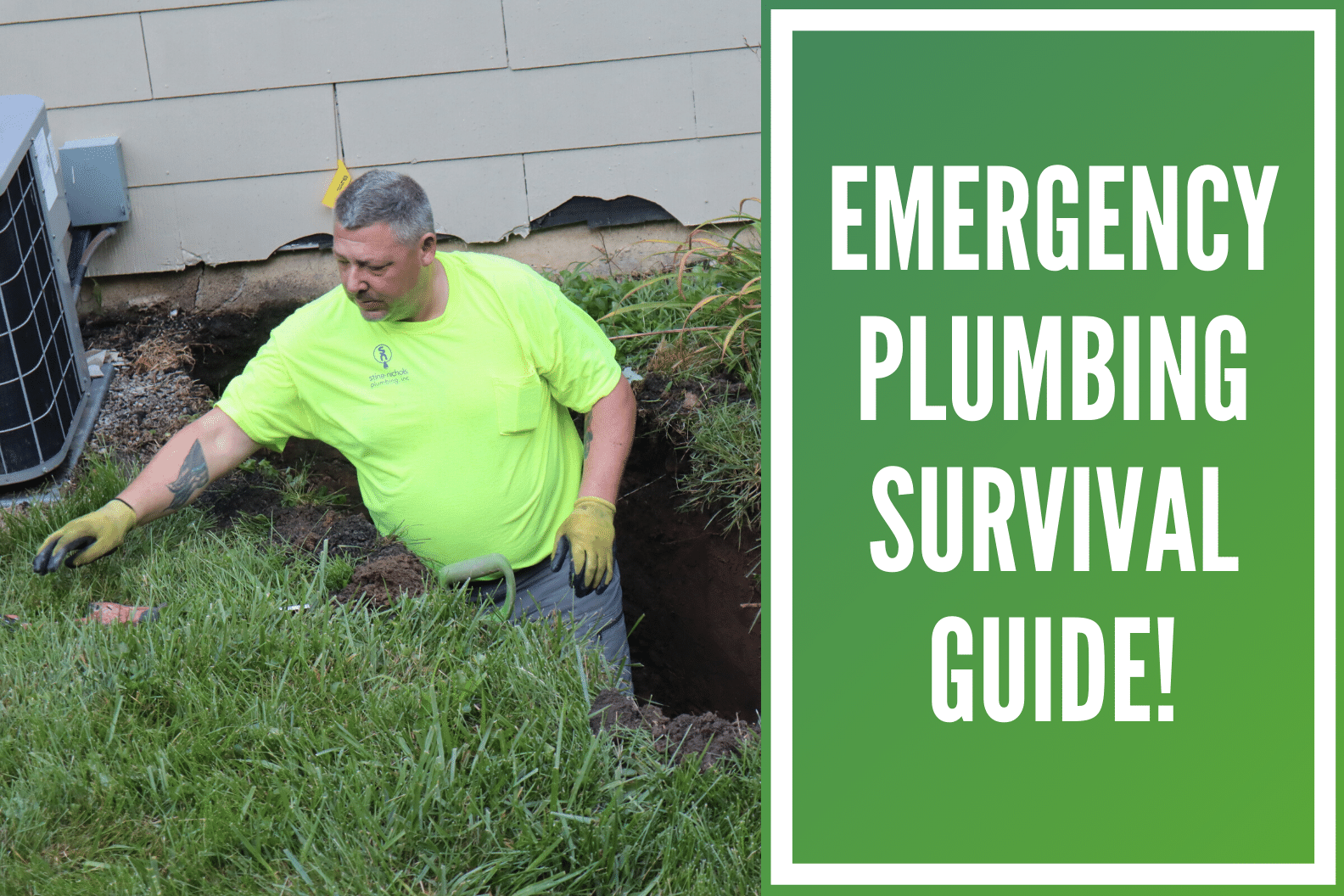Ever come home and notice your house is starting to slowly resemble an indoor swimming pool? What would be the first action you would take upon seeing this? If you’re at a loss of words, you are certainly not alone! What was just described can be accurately defined as a “plumbing emergency.” Just as we often say regular plumbing problems don’t operate on a normal 9-to-5 schedule, the same can be said for plumbing emergencies. Sometimes, they’ll occur during the middle of the night and you’ll wake up to a scary sight! Other times, they could arise when you’re out of town on vacation. And even if they occur when you’re at home, do you have a plan of attack on what needs to be done?
Plumbing emergencies can be frightening! It doesn’t take long for a plumbing miscue to create significant damage and cause a serious financial toll! Our team at Stine-Nichols Plumbing understands all of this and wants to make sure you have an action plan and know what steps you should be taking. Yes, you will need to get on the phone with a Kansas City plumber right away, but there are things you can do instantaneously to limit the damage.
With this week’s blog post, we will walk you through these steps and get you prepared to survive any plumbing emergency that may be thrown your way!
Reacting to a major water leak
Without a doubt, one of the most well-known plumbing emergencies is a broken water pipe or a failing sump pump. This is what will be responsible for creating the costly damage to your home and flooded basements. Upon noticing this, it’s important to remain calm and understand what needs to be done first:
- Shut off the main water line: This should be the absolute first thing you think of doing. Once a plumbing emergency strikes, it’s all about limiting the damage. Whether you’ve lived in your home for over 20 years or just moved in, locating the shutoff valve is an important piece of information. These valves can be located in different places depending on the home. Keep in mind that a shutoff key could also be needed! It’s much better to ask questions like this before an emergency goes down. So, if you don’t know right now where the shutoff valve is, put it on your to-do list to find out!
- Call your friends at Stine-Nichols: If you live in the Kansas City area, your next step is going to be giving your friendly plumbers at Stine-Nichols a call! If you haven’t needed to use a plumber before, start searching around and asking for referrals. When the emergency strikes, the last thing you want to be doing is trying to gauge which plumbers are legitimate and possess the experience needed to solve your emergency in a timely manner. Once you have a plumber you like and trust, have them come out for a routine inspection. Scheduling regular inspections will work wonders in preventing any plumbing emergencies from ever emerging. Remember, it’s all about acting in a proactive manner, as opposed to reactive.
- Call your homeowners’ insurance provider: With your plumber on-site starting the clean-up process, it’s time to figure out what your insurance provider will cover. It will depend on the policy you currently have, but most of the time, any water damage caused by plumbing emergencies is covered.
- Learn from this emergency: As with anything in life, the most important lesson you can learn is why the emergency happened in the first place. What caused it and how can you prevent the same from happening again? While you have the plumber on-site, ask him or her these questions. Any experienced plumber will be able to decipher the situation and figure on what the culprit was.
Items you should do right now: (1) Know where your shutoff valve, (2) do you need a shutoff key for the valve, (3) do you have a local plumber to trust and (4) what emergencies does your homeowners’ insurance cover?
Watch out for any and all gas leaks!
Even if you think it may be a small gas leak, NEVER take any type of gas leak lightly! Gas leaks pose major threats to both your property and any occupant’s safety. Here’s how you should proceed if there’s any inkling of a doubt that something serious is occurring:
- Evacuate everyone from the home: First and foremost, you’ll want to get everyone out of the house right away. If you have time, open doors and windows.
- Turn off gas at the meter: After everyone has left the house, make sure to turn the gas off at the meter.
- Call 911: Once evacuated, you’ll actually want to call in emergency services first and notify them of the natural gas leak.
- Call your local plumber: Hiring a plumber for a gas leak is slightly different than doing for say, a clogged sink! Considering they can potentially create extremely dangerous situations, make sure your plumber is fully trained and qualified to work with gas leaks. A gas leak is definitely not something you want becoming a routine ordeal!
Clogged toilets or sinks
On a MUCH SMALLER scale than the previous two items, another item that might still be considered an emergency is a clogged toilet or sink. After all, water can start seeping out of the bowl and create a minor headache! To prepare yourself for this issue, it’s more so about being stocked up with the necessary tools. With this, we’re referring to two main types of plungers: (1) a cup plunger and (2) a flange plunger.
- Cup plunger: Here, we have the option that most people often think of when they hear the word, “plunger.” These plungers are traditionally designed to work on flat surfaces. Believe it or not, but the curve of the toilet bowl eliminates part of the purpose behind this common type of plunger. Use these on flat sink drains, shower drains or bath tub drains.
- Flange plunger: Next up is the flexible option known as a flange plunger. It has the cup of the plunger previously mentioned, but also a flap that folds out. This makes it perfect for fitting inside the curved drain of a toilet.
A good rule of thumb is to have one of each in your bathroom and never use the same plunger for your sink and toilet. The hygienic impact is not necessarily the most sanitary. If you’re not able to unclog the drain, then you’re likely looking at a slightly more significant clog. Give your local plumber a call and they’ll surely have it fixed in no time!
Water heater leaks
At Stine-Nichols, we’re certainly no strangers to water heater service calls! It’s an invaluable component to your home plumbing system and something we all would like to keep running smoothly. However, when there’s a leak, you’re not alone if you get a little bit scared! As with any plumbing failure, it’s important to act quick and figure out how to fix the issue!
In a prior blog post, we covered the difference between water heater leaks from the top of the unit and those from below it. Feel free to read through that complete article HERE. For both leaks, there’s a few troubleshooting items any homeowner can test out. Some of the time, the leak is simply from a loose component. However, more often than not, a more serious underlying issue is to blame! In these instances, your best bet is going to be calling up an experienced plumber and having them take a look. Depending on the age of your unit, a complete replacement might make more financial sense than a repair.
Plumbing emergencies can strike whenever!
If you learned one thing from this blog, we hope it’s the idea that plumbing emergencies can strike whenever AND wherever! Commercial office, residential house, bathroom, kitchen, basement, you name it! When an emergency arises, it’s all about knowing what needs to be done first and having a reliable plumber you can count on to fix the issues.
Here at Stine-Nichols Plumbing, we take pride in being a resource in these times of need. Serving the entire Kansas City area and many of the surrounding cities, we’re always ready to go in a moment’s notice. We know time is of the essence in these situations and will do our best to fix any issue before it gets worse. Give us a call at 816-348-3481 or fill out the form HERE to learn how you can get started. As always, we’re more than happy to provide a free quote before any work is done!


